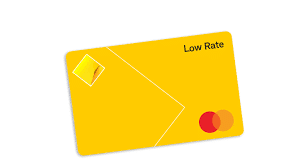Anúncios
In today’s world, mastering your finances in Australia is more important than ever. Knowing your financial situation is key to good financial management. With the right tips, you can manage your budget, savings, and investments well. This guide will help you understand how to manage your finances in Australia.


CommBank Low Rate Credit Card
Understanding Your Financial Situation
Knowing your financial situation is key to managing money well. It involves tracking your income and expenses to see how money moves. This helps you understand your spending, manage your money, and make smart financial choices.
Tracking Income and Expenses
Tracking your income means listing all your earnings. Managing expenses means sorting out where your money goes. It’s important to know your fixed and variable costs, like:
Anúncios
- Fixed expenses: rent or mortgage, insurance premiums
- Variable expenses: groceries, entertainment, dining out
By keeping a close eye on your spending, you can change your financial habits. This helps you make better money choices over time.
Anúncios
Importance of Budgeting
Budgeting is very important. A good budget helps you manage daily costs, save for the future, and deal with unexpected money issues. It lets you focus on what’s most important financially and helps you reach your long-term goals.
Budget planners are great tools for this. They offer help and resources to create a solid financial plan.

Choosing a Budgeting Method
Choosing the right budgeting method is key to managing your money well. There are many methods out there, each suited for different spending habits and income levels. Knowing your options helps you pick one that fits your financial goals.
50/30/20 Rule
The 50/30/20 rule makes budgeting simple. It divides your income into three parts. Spend 50% on essentials like rent and food, 30% on fun stuff, and 20% on saving or paying off debt. This rule helps you balance your spending and save money.
Zero-Based Budgeting
Zero-based budgeting means every dollar has a job. You plan your spending so that your income minus expenses equals zero each month. It helps you think about your spending and find ways to save more.
Envelope System
The envelope system uses cash to manage your spending. You put money in envelopes for different categories. It helps you stick to your budget and understand where your money goes.
Creating a Rainy-Day Fund
An emergency fund is key to keeping your finances stable. It helps protect you from unexpected costs like medical bills, car repairs, or losing your job. Knowing how important an emergency fund is helps you get ready for life’s surprises.
Importance of Emergency Savings
Emergency savings are like a safety net. They help you deal with sudden money problems without getting into debt. Having this financial cushion gives you peace of mind and lets you make smart choices when things get tough. By setting up a rainy-day fund, you make your finances stronger and more stable.
How Much to Save
Experts say you should save enough to cover 3 to 6 months of living costs. This includes rent, bills, food, and other must-haves. Storing these savings in a high-interest account helps your money grow. Plus, it makes sure you can get to your money when you need it most.
Determining Your Risk Profile
Understanding your risk profile is key to smart investment choices. Many factors influence your risk tolerance, like age, personal life, and investment goals. Knowing these helps tailor your path to financial growth.
Factors Influencing Risk Tolerance
Several factors can greatly affect your investment strategy. Important ones include:
- Age: Younger people usually take more risks because they have more time to recover.
- Financial Goals: Your goals, whether short or long-term, influence how much risk you’re willing to take.
- Investment Horizon: A longer time frame can make you more comfortable with ups and downs.
- Personal Financial Situation: Your overall financial health affects how much risk you can handle.
Investment Goals Assessment
Having clear investment goals is like having a map for your financial journey. Whether it’s saving for retirement, buying a home, or funding education, these goals guide your investment choices.
Aligning your strategies with your risk profile helps you grow your finances while managing risks. Assessing your risk tolerance and investment goals is crucial for successful financial planning.
Allocating Your Investments
Effective investment allocation is key to a strong financial portfolio. By diversifying, you spread your investments across different asset classes. This includes shares, bonds, and cash. It helps reduce risk and increase potential returns.
Asset Classes and Diversification
Diversifying among asset classes is vital for a stable investment journey. Common asset classes are:
- Shares: Great for long-term growth.
- Bonds: Provide income and lower volatility.
- Cash: Offers quick access to funds and acts as a buffer.
By allocating investments across these classes, you can manage risks better. Diversification helps capture opportunities while protecting your portfolio during tough times.
Individual Circumstances That Affect Allocation
Your investment strategy should match your unique situation and goals. Key factors include:
- Age: Younger investors might choose more shares for long-term growth.
- Income Level: Those with higher incomes might take on more risk, while lower incomes may prefer safer options.
- Long-term Financial Objectives: Your goals determine whether to focus on growth or income.
Knowing how these factors impact your allocation helps tailor a strategy. A customised approach boosts your chances of reaching your financial targets. It uses the right asset classes and diversification strategies.
Automation of Investments
Investment automation makes building wealth easy and consistent. It lets you set aside money for investments regularly. This method makes saving simpler and helps you save more often.
Benefits of Automated Transfers
Automated transfers offer many benefits:
- They help you invest regularly, which can reduce the impact of market ups and downs.
- They help you avoid putting off saving, which can lead to more wealth over time.
- They save you from the stress of making constant financial decisions, keeping you focused on your long-term goals.
Setting Up Regular Contributions
Setting up regular contributions is easy with investment automation. Just follow these steps:
- Decide on a percentage of your income you can invest each time.
- Find a trustworthy investment account or platform that supports automated transfers.
- Choose how often you want to transfer money, like every month or with your paychecks.
By following these steps, you can make sure you save and invest regularly. This can lead to big financial gains over time.
Reviewing Your Investment Portfolio
It’s crucial to regularly review your investments. This ensures they match your financial goals and risk level. Markets change, and some investments might not meet your expectations. By rebalancing, you can adjust your investments to keep your risk level in check, helping to improve returns.
When to Rebalance Your Portfolio
Several signs can indicate it’s time to rebalance your investments. Keep an eye on:
- A big change in asset values
- Changes in the overall market
- Shifts in your personal financial situation or goals
- How long it’s been since your last review
Monitoring Investment Performance
Keeping an eye on how your investments are doing is key. Regular checks help ensure they’re on track. Look at:
- How your returns compare to market benchmarks
- The consistency of your investment performance
- How market trends affect your investments
Financial Tools and Resources in Australia
Australians have many financial tools to help manage money better. These tools make it easier to track spending and stay financially stable. They meet different community needs. From budgeting apps to financial education, Australians can learn to improve their money situation.
Useful Budgeting Apps
Many budgeting apps are popular for their easy-to-use features:
- Mint: It gives insights into spending, helps set budgets, and tracks bills.
- YNAB (You Need A Budget): It’s all about planning your budget ahead, making it easier to manage money.
- EveryDollar: It’s simple for zero-based budgeting, making it easy to track expenses.
These apps not only manage money but also help understand spending habits better.
Financial Literacy Resources for Various Communities
Learning about money is key to managing it well. There are many resources for different groups:
- MoneySmart: It’s a government program with tools and info for all Australians to manage their money.
- IndigenousX: It offers special financial workshops and advice for Indigenous communities.
- Small Business Online: It has resources for entrepreneurs to improve their financial knowledge.
Using these resources can greatly improve understanding and help make better financial plans.
Conclusion
Learning to manage your money is a key step towards financial freedom. It starts with knowing where your money goes and making a budget. By understanding how to save, invest, and use the right tools, you can manage your finances better.
This journey is not a one-time task. It’s an ongoing effort that needs regular checks and changes. By doing this, you can make sure your finances are on the right track.
Using strategies like budgeting and investing wisely can help you secure your financial future. As you apply these tips, you’ll feel more confident in your money choices. This will make your financial life more stable.
Getting better at managing money takes education, planning, and hard work. By putting in the time and effort, you can reach your financial goals. This will also make your future more secure for you and your family.
FAQ
What are the most effective budgeting methods for managing finances?
How much should I have in my rainy-day fund?
What factors influence my risk profile when investing?
Why is diversification important in investment allocation?
How can I automate my investments effectively?
When should I review and rebalance my investment portfolio?
What financial tools are available for budgeting in Australia?
How can I determine my investment goals?
Conteúdo criado com auxílio de Inteligência Artificial


